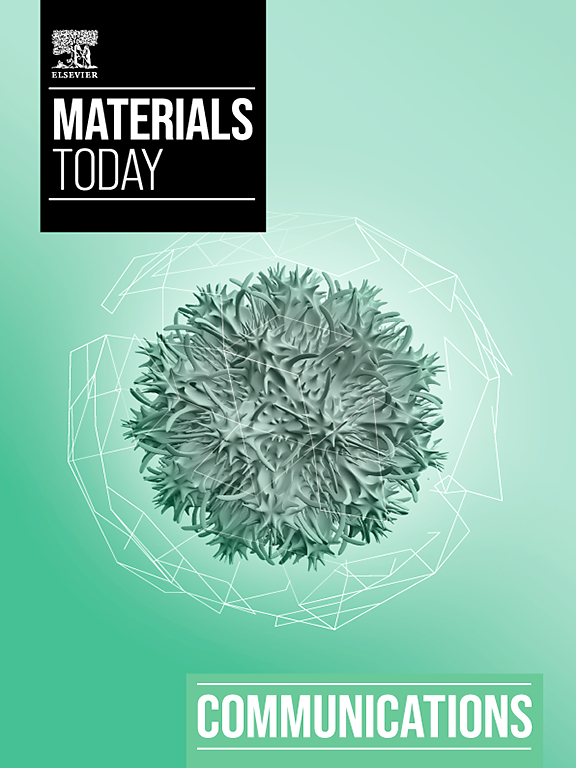Influence of Ni content on electrochemical corrosion and tribological behavior of Cu-10Sn coatings by laser cladding
IF 4.5
3区 材料科学
Q2 MATERIALS SCIENCE, MULTIDISCIPLINARY
引用次数: 0
Abstract
In this work, Cu-10Sn-Ni ( = 0, 3, 6, 9, and 12 wt%) alloy coatings were prepared using laser cladding technology. The influence of Ni content on the phase composition, microstructure, crystallographic characteristics, microhardness, electrochemical corrosion, dry sliding wear and corrosive wear behavior of the coatings were studied. The results indicated that the coatings formed good metallurgical bond with the substrate. The coatings were composed primarily of the α-Cu matrix and small γ precipitates. The Ni element effectively reduced component segregation, and with the increased of Ni content, the grain size in the coating was significantly refined, resulting in fine equiaxed grains. Under the effect of fine grain strengthening, the Cu-10Sn-12Ni (C12NS) coating achieved a higher microhardness of approximately 222.9 ± 5.3 HV. In the electrochemical corrosion test, the increased in the number of grain boundaries significantly reduced the corrosion resistance of the Cu-10Sn-Ni coatings. The Cu-10Sn-6Ni (C6NS) coating exhibited excellent corrosion resistance, with an of only 1.37 μA/cm. The results of the dry sliding wear test showed that under the influence of the hardness gradient between the hard precipitate phase and the soft matrix of the coating, the C6NS coating achieved satisfactory wear resistance with a specific wear rate of 3.30 × 10 μm/Nm. Meanwhile, due to the good corrosive resistance, the C6NS coating showed the best tribological performance in 3.5 wt% NaCl environment, and the specific wear rate was 1.58 × 10 μm/Nm.镍含量对激光熔覆 Cu-10Sn 涂层电化学腐蚀和摩擦学行为的影响
本研究采用激光熔覆技术制备了铜-10Sn-Ni(= 0、3、6、9 和 12 wt%)合金涂层。研究了镍含量对涂层的相组成、微观结构、晶体学特征、显微硬度、电化学腐蚀、干滑动磨损和腐蚀磨损行为的影响。结果表明,涂层与基体形成了良好的冶金结合。涂层主要由 α-Cu 基体和少量 γ 沉淀组成。镍元素有效地减少了成分偏析,随着镍含量的增加,涂层中的晶粒尺寸显著细化,形成了细小的等轴晶粒。在细晶粒强化的作用下,Cu-10Sn-12Ni(C12NS)涂层获得了更高的显微硬度,约为 222.9 ± 5.3 HV。在电化学腐蚀试验中,晶界数量的增加显著降低了 Cu-10Sn-Ni 涂层的耐腐蚀性。Cu-10Sn-6Ni(C6NS)涂层的耐腐蚀性能极佳,仅为 1.37 μA/cm。干滑动磨损试验结果表明,在涂层硬析出相与软基体之间硬度梯度的影响下,C6NS 涂层获得了令人满意的耐磨性,比磨损率为 3.30 × 10 μm/Nm。同时,由于良好的耐腐蚀性,C6NS 涂层在 3.5 wt% 的 NaCl 环境中表现出最佳的摩擦学性能,比磨损率为 1.58 × 10 μm/Nm。
本文章由计算机程序翻译,如有差异,请以英文原文为准。
求助全文
约1分钟内获得全文
求助全文
来源期刊

Materials Today Communications
Materials Science-General Materials Science
CiteScore
5.20
自引率
5.30%
发文量
1783
审稿时长
51 days
期刊介绍:
Materials Today Communications is a primary research journal covering all areas of materials science. The journal offers the materials community an innovative, efficient and flexible route for the publication of original research which has not found the right home on first submission.
 求助内容:
求助内容: 应助结果提醒方式:
应助结果提醒方式:


